Our Blog
Check out our innovative pump solutions and industry insights to see what's new in the pumping industry. Stay up to date with the latest trends and news in the world of pumping technology by following our pumping technology blog.
- Home
- Blog
Exploring the Benefits and Applications of 2 Submersible Pumps in Modern Water Management
In recent years, the integration of advanced technologies in water management systems has become increasingly vital for ensuring sustainable resource utilization. Among these innovations, the 2 submersible pump stands out as a pivotal component, providing efficient solutions for various applications in both municipal and agricultural sectors.
 These pumps are engineered to work efficiently underwater, making them ideal for tasks such as groundwater extraction, wastewater management, and irrigation support. Their ability to operate in challenging environments while minimizing energy consumption not only enhances productivity but also contributes to environmental stewardship.
These pumps are engineered to work efficiently underwater, making them ideal for tasks such as groundwater extraction, wastewater management, and irrigation support. Their ability to operate in challenging environments while minimizing energy consumption not only enhances productivity but also contributes to environmental stewardship.
This exploration delves into the myriad benefits and applications of 2 submersible pumps, highlighting their role in modern water management practices and their transformative impact on resource efficiency and sustainability.
Advantages of Submersible Pumps in Efficient Water Extraction
Submersible pumps have become integral in modern water management systems due to their numerous advantages in efficient water extraction. Unlike traditional pumps, submersible pumps operate submerged in the water, which allows them to push water to the surface rather than pulling it. This design minimizes the risk of cavitation, ensuring a higher flow rate and better efficiency, which is crucial in applications such as groundwater extraction, sewage treatment, and irrigation.
One of the key benefits of submersible pumps is their ability to handle various types of water, including dirty or abrasive fluids. This versatility allows for use in diverse environments, from residential areas to industrial applications. Furthermore, their compact design enables easier installation and maintenance in confined spaces, reducing labor costs and downtime. As a result, submersible pumps are not just efficient; they also contribute to more sustainable water management by optimizing energy consumption while meeting increased water demands in urban and agricultural sectors.
Innovative Applications of Submersible Pumps in Agriculture
Submersible pumps play a crucial role in modern agriculture by efficiently managing water resources in various farming practices. These pumps, designed to operate underwater, provide significant advantages such as improved water delivery, reduced evaporation losses, and enhanced crop yield. According to a recent report by the Food and Agriculture Organization (FAO), the adoption of submersible pumps in irrigation systems can lead to a 30% increase in crop productivity, highlighting their essential role in contemporary agricultural practices.
Innovative applications of submersible pumps extend beyond traditional irrigation. Farmers are now leveraging these devices for nutrient delivery systems, allowing for precise fertilization and better growth rates. The International Water Management Institute (IWMI) indicates that such systems can reduce water usage by up to 50%, making them an environmentally friendly choice in agricultural management.
**Tip:** When selecting a submersible pump, consider factors such as pump capacity, depth of submersion, and energy efficiency to maximize your investment.
With ongoing advancements in technology, submersible pumps are expected to evolve further, incorporating smart systems capable of monitoring soil moisture levels and optimizing water usage. These innovations not only promise increased efficiency but also contribute to sustainable farming practices.
**Tip:** Regular maintenance and monitoring of your submersible pump can ensure its longevity and performance, helping you avoid costly downtime and repairs.
Exploring the Benefits and Applications of 2 Submersible Pumps in Modern Water Management
| Application Area | Pump Type | Flow Rate (m³/h) | Power Consumption (kW) | Benefits |
|---|---|---|---|---|
| Agriculture Irrigation | Electric Submersible Pump | 20 | 5 | Efficient water delivery, reduced energy costs, precise control |
| Stormwater Management | Hydraulic Submersible Pump | 15 | 4 | Effective debris handling, compact design, reliable operation |
| Groundwater Extraction | Deep Well Submersible Pump | 30 | 7.5 | High efficiency, deep installation capabilities, minimal maintenance |
| Irrigation for Specialty Crops | Solar Powered Submersible Pump | 10 | 2 | Sustainable energy use, cost savings, eco-friendly |
Enhancing Urban Water Management with Submersible Pump Technology
Submersible pumps are revolutionizing urban water management by providing efficient solutions for various water-related challenges. These pumps, designed to operate underwater, are crucial for applications such as stormwater drainage, sewage disposal, and aquifer recharge. Their ability to prevent flooding in urban areas during heavy rainfall makes them indispensable in maintaining infrastructure and ensuring public safety.
Moreover, submersible pumps contribute to enhancing the sustainability of urban water systems. By facilitating groundwater extraction and managing wastewater efficiently, these pumps reduce reliance on surface water sources, promoting the conservation of precious freshwater resources. Additionally, their compact design and low maintenance requirements make them ideal for deployment in densely populated areas where space is limited. The integration of smart technology in modern submersible pumps further enhances their effectiveness, allowing for real-time monitoring and improved energy efficiency.
In conclusion, the application of submersible pump technology plays a vital role in modern urban water management, addressing pressing issues like water scarcity and urban flooding. As cities continue to grow, the adoption of these advanced pumps will be essential in promoting resilient and sustainable urban water systems.
Maintenance Tips for Optimal Performance of Submersible Pumps
Submersible pumps play a crucial role in modern water management, particularly in applications ranging from agricultural irrigation to wastewater treatment. To ensure these pumps operate at their best, regular maintenance is essential. Proper upkeep not only extends the lifespan of the pump but also enhances its efficiency, resulting in cost savings over time.
One critical maintenance tip is to routinely check and clean the pump’s intake filter. Blockages can significantly affect performance, leading to reduced flow rates and increased energy consumption. Additionally, it's advisable to inspect electrical components for any signs of wear, such as frayed wires or corrosion, as these issues can lead to pump failure.
Another important aspect of maintenance is monitoring the pump's operating environment. Ensure that the installation site is free from debris that could obstruct the pump's operation. Periodically, it’s beneficial to test the pump's performance by measuring the flow rate and pressure. Keeping detailed records of these metrics can help identify any changes over time, which may indicate potential issues requiring attention.
Benefits and Applications of Submersible Pumps in Modern Water Management
Future Trends in Submersible Pump Design and Sustainability
The future of submersible pump design and sustainability is taking a transformative turn, driven by the growing demand for efficient water management solutions. As the global market for residential water pumps is projected to increase significantly, reaching $26.92 billion by 2032, innovative designs focusing on eco-friendliness and energy efficiency are becoming paramount. Advanced materials and smart technologies are being integrated into submersible pumps, improving their performance while reducing their environmental impact.
Tips for choosing a sustainable submersible pump include evaluating the energy efficiency ratings and considering pumps that incorporate sensor technology for optimal performance. Additionally, opting for pumps made from recyclable materials can contribute to a more sustainable solution.
Moreover, the trend towards automation and remote monitoring is revolutionizing the way submersible pumps are utilized in modern water management systems. This shift not only enhances operational efficiency but also allows for real-time data collection, enabling better decision-making for water resource management. Incorporating such technologies can lead to substantial long-term cost savings and contribute positively to environmental conservation efforts.
Related Posts
-
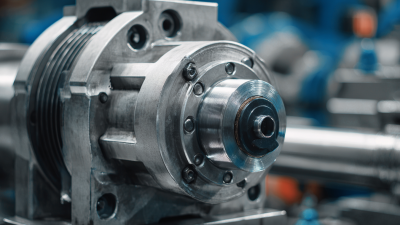
Understanding the Innovations of Pump Manufacturers in Modern Industrial Applications
-
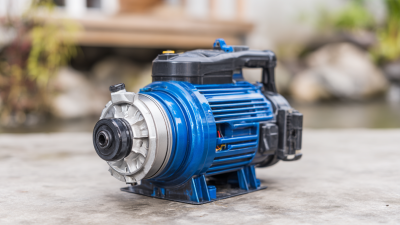
Exploring the Efficiency of Submersible Water Pumps: A Comprehensive Guide for Homeowners
-

Exploring the Efficiency of Deep Well Pumps in Sustainable Agriculture Practices
-
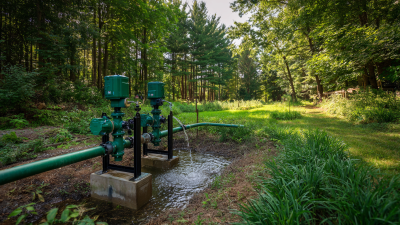
Top 5 Benefits of Upgrading Your Well Pumps for Improved Water Quality and Efficiency
-
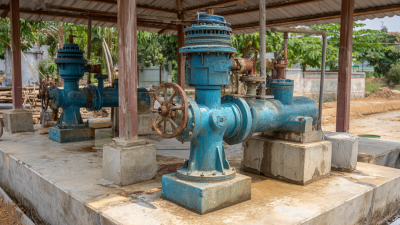
The Ultimate Guide to Choosing the Right Deep Well Water Pump for Your Needs
-
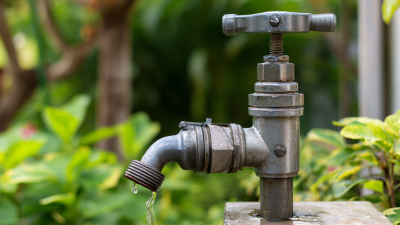
Essential Guide to Choosing the Perfect Well Water Pump for Your Home Needs

